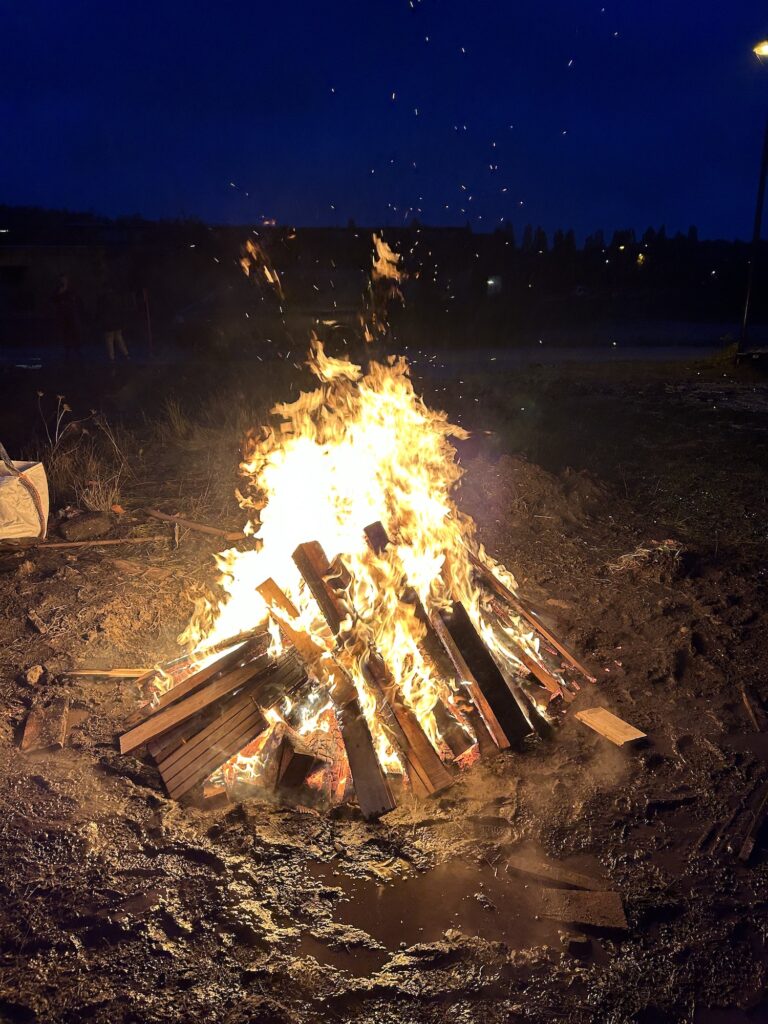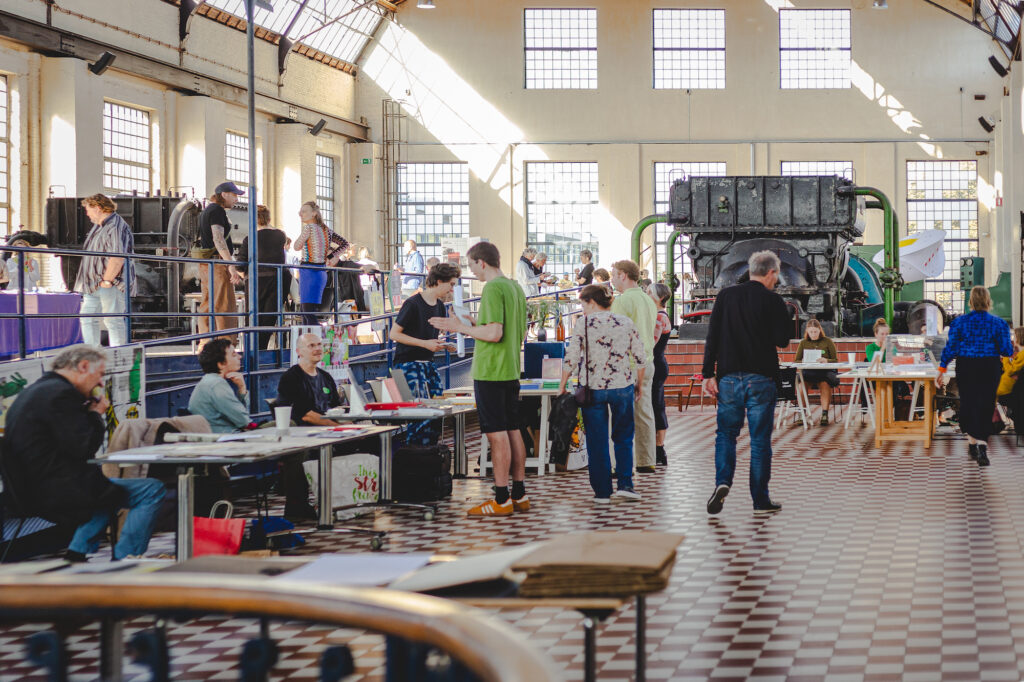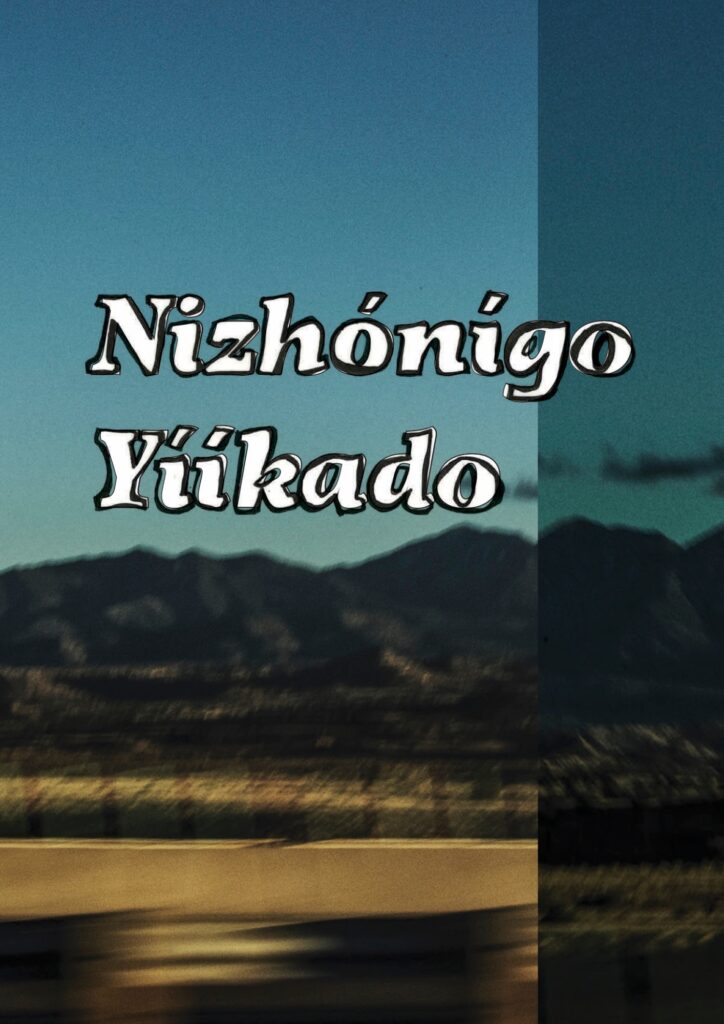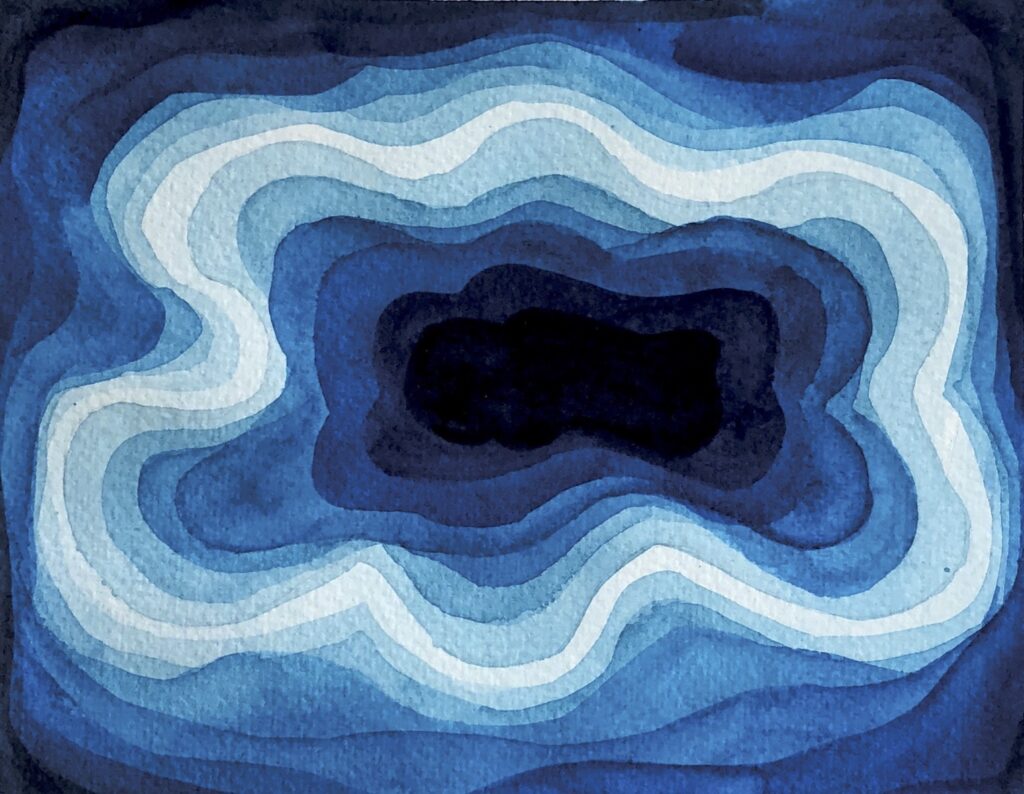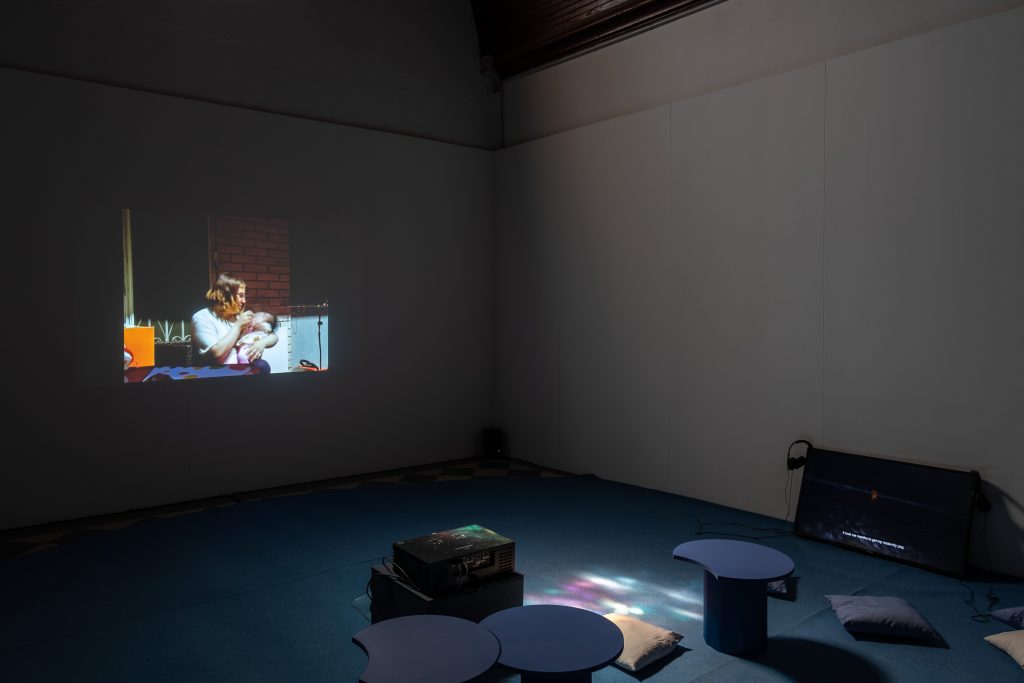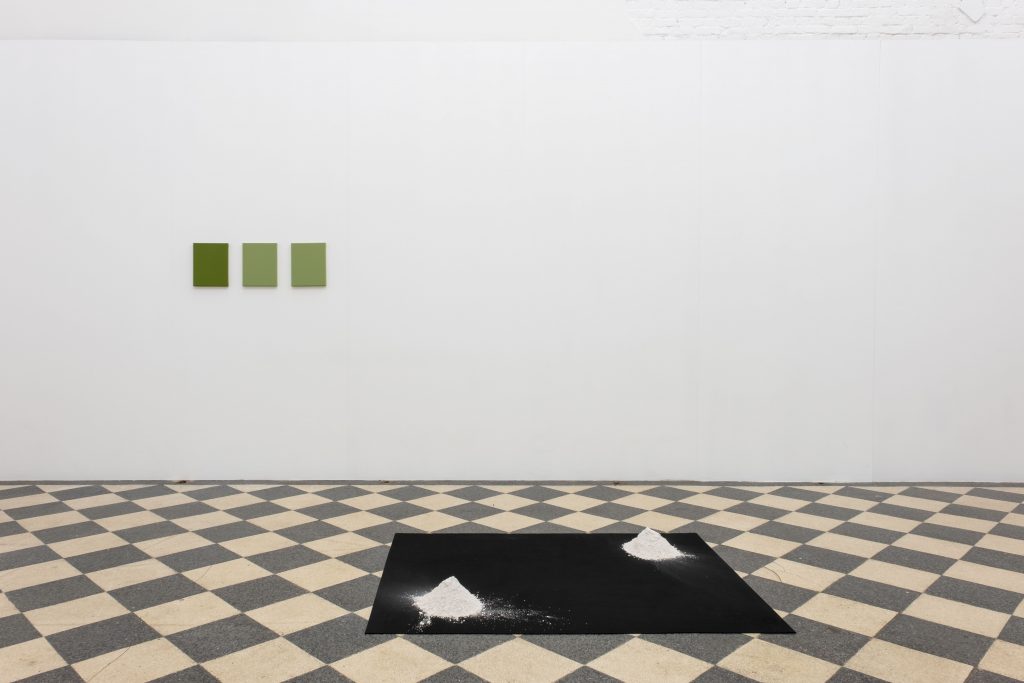A rooms of one’s own through its beings
A room of one’s own through its beings A fan zine dedicated to some of the beings cited in Virginia Woolf’s seminal work.
Zine – Steed alchemy
Steed alchemy A zine about the fictional process that led to the making of the (likewise fictional) installation titled “Steed alchemy”. An experiment on artistic research and the subversion of expectations.
Impossible Songs
‘Impossible Songs’ – Mikołaj Sobczak Impossible Songs is an exhibition of the artist Mikołaj Sobczak curated by Jester’s curator-in-residence Valentina Bianchi. Impossible Songs consists of a multimedia installation presenting the multiform mythology of the artist Mikołaj Sobczak. The exhibition functions as a translation of the musical The Universal Empire presented at the Mennonite Church in Amsterdam by Rozenstraat – a rose is a rose is a rose in March 2024. The handout with the exhibition text and further information can be also read online. The piece is evoked through film and sound recording, but also through the presence of some of the elements utilized on the day of the performance. Some of the set pieces (for example the costume worn by the puppet of William Blake/Mercury) have been imbued with the energy and atmosphere of the live show, metaphysically carrying some of its essence into a new visual constellation. The images are screened and the audio is played in the kunsthal, occupying an ideal space as well as a real one and transporting the audience on a stage that is at the same time new and reminiscent of the musical setting. In a composition fluctuating between repetition and novelty, past and future are…
Jester Opening Weekend
To inaugurate a new space means to imagine its possibilities and celebrate the community that will animate it. During our opening weekend we give life to a still untouched house, adorning its most homey rooms and bringing light to darker corners. Jester’s inaugural weekend includes workshops, talks, performances, and screenings that in one way or another revolve around the notion of housewarming, as well as the rituals and traditions connected to sharing a newly occupied space, making it a place suitable for hosting an engaged public. Some of the featured artists address the theme of housewarming as a spiritual moment able to attract the whole community, when ceremonial actions are performed to ensure a prosperous future; in most cultures during a housewarming the invited guests are required to bring tokens of their friendship: bread, salt, coffee, or other food, wood for the fireplace, textiles and threads, decorations, or musical instruments are all part of a well-wishing ritual and charged with intricate symbolisms. Many of these rites are meant to purify the environment, clearing the space of some mysterious lingering presence. With a similar intent some of the featured artists’ performances will invoke spirits to inspire a connection between Jester’s past…
Apples and Oranges – Artists’ Books Fair
Apples and Oranges is an independent artists’ books fair held annually in Limburg and a public programme, exploring publishing as artistic practice. This year, we meet in Genk, where over 35 artists and collectives present their work. It brings together artists engaging in experimental publishing and features books, prints, zines, scores, and other publications that might fall outside of the traditional distribution circuit. Publishing, and self-publishing in particular, is often an engine for collaboration, leading to intricate networks of connections and alliances. Inspired by the transformative and political potential of publishing, Apples and Oranges offers not only a distribution opportunity but also an occasion to exchange knowledge and foster new connections. Apples and Oranges combines the fair with a lively public programme of performances, lectures and conversations, exploring the aristic, political and transformative potential of publishing. Details about the public program with An Onghena and Jivan van der Ende, Auriane Preud’homme, Clara Amaral, Maartje Fliervoet, Marjolein Guldentops, Melissa Gordon, Niels Poiz, Noam Youngrak Son can be found on Jester’s website.
L’art du pliage
L’art du pliage is a small collection of collages on Polaroids. I am trying to overlap familiar elements on top of the scenery I am now immersed in. But all I have around me are other unfamiliar constructs. I build my liking of my new home on the resentment I nurture for my home country. How healthy can it be? It’s only through other people’s gaze, a friendly gaze, that I can see why I’m here. L’art du pliage was featured in the KIOSK’s Lines of Flight e-zine (2nd issue).
Nizhónígo Yííkado We Walk in Beauty – The Zine
Nizhónígo Yííkado We Walk in Beauty – The Zine For the project Nizhónígo Yííkado We Walk in Beauty taking place in Belgium between November 17th and December 18th 2022, Valentina Bianchi and Laura Eva Meuris curated and designed a zine.
The Consolation of Water Lilies Zine
The Consolation of Water Lilies Zine A zine was compiled during the workshop “The Consolation of Water Lilies” held in Extra City Kunsthal in Antwerp on July 18th, 2022 as part of the artistic program “Bodies of Work” by Curatorial Studies KASK. The participants were shown video works by Eva Giolo, Eva L’Hoest, and Mélanie Peduzzi and excerpts of texts by authors such as Silvia Federici, Astrida Neimanis, Robin Wall Kimmerer, and Sophie Lewis. Inspired by these inputs the participants were then encouraged to produce their own contributions. The final product is a collection of impressions and reflections on the themes of motherhood, pregnancy, gestation, reproduction, and care. You can flip through the zine on Issuu at this link.
The Consolation of Water Lilies
The Consolation of Water Lilies 28-31.07.2022 What does it mean for bodies of water to hold other bodies of water? Should this holding and gestating be considered forms of labor? In what ways can the experience of maternity be lived today? The workshop explores the environmental significance of motherhood and the political ramifications of gestation. Through the reading of relevant texts, the screening of video works by Eva Giolo, Eva L’Hoest, and Mélanie Peduzzi, the participants will be invited to reflect upon contemporary questions about pregnancy and caregiving, and share their own experiences. In the following days, the remnants of the workshop will be displayed together with the three aforementioned films. “Océan” by Mélanie Peduzzi, 15”, 2022 “Women with each other share or forget to share. Every birth is different. I will show you mine. Making this video object was essential for me. On the one hand, to move forward, but also to remember. And most importantly to share a story of this experience that often leaves women with amnesia.” – Mélanie Peduzzi about her work Mélanie Peduzzi (Brittany, 1989) is a Belgian artist, graduated from ENSAV La Cambre in 2013, who works between writing, performance and photography. She…
built in the midst
built in the midst 14-24.07.2022 ‘built in the midst’ explores similarities, repetition, and differences in a magical constellation of references. The elements of the installation function as sculptures, feelings, or contexts, according to the physical position of the observer. The visitor is therefore guided in the chapel in a constantly renovated discovery of various levels of visibility. Hamed Dehqan’s practice is based on personal studies and research around phenomena of language and perception, engaging in a studio-based practice that creates a unique formal language through sculptural installations, multi-dimensional spatial drawings, and paintings. He is a visual artist currently studying advanced studies and practice-based research in the visual arts as a resident at the HISK Academy in Ghent (2022-2023). His work has been shown at 3-Platform, Tehran, Iran, CalArts Expo, California, USA, Lona Galeria, São Paulo, Brasil. In 2016, he started the Pansion Project, an art project space. He has also worked as a writer in collaboration with art magazines. The exhibition is the third installment of Bodies of Work, a summer program of exhibitions and events that unfolds in the chapel of Kunsthal Extra City, Antwerp. Organized by the Curatorial Studies postgraduate at KASK & Conservatorium. With…



